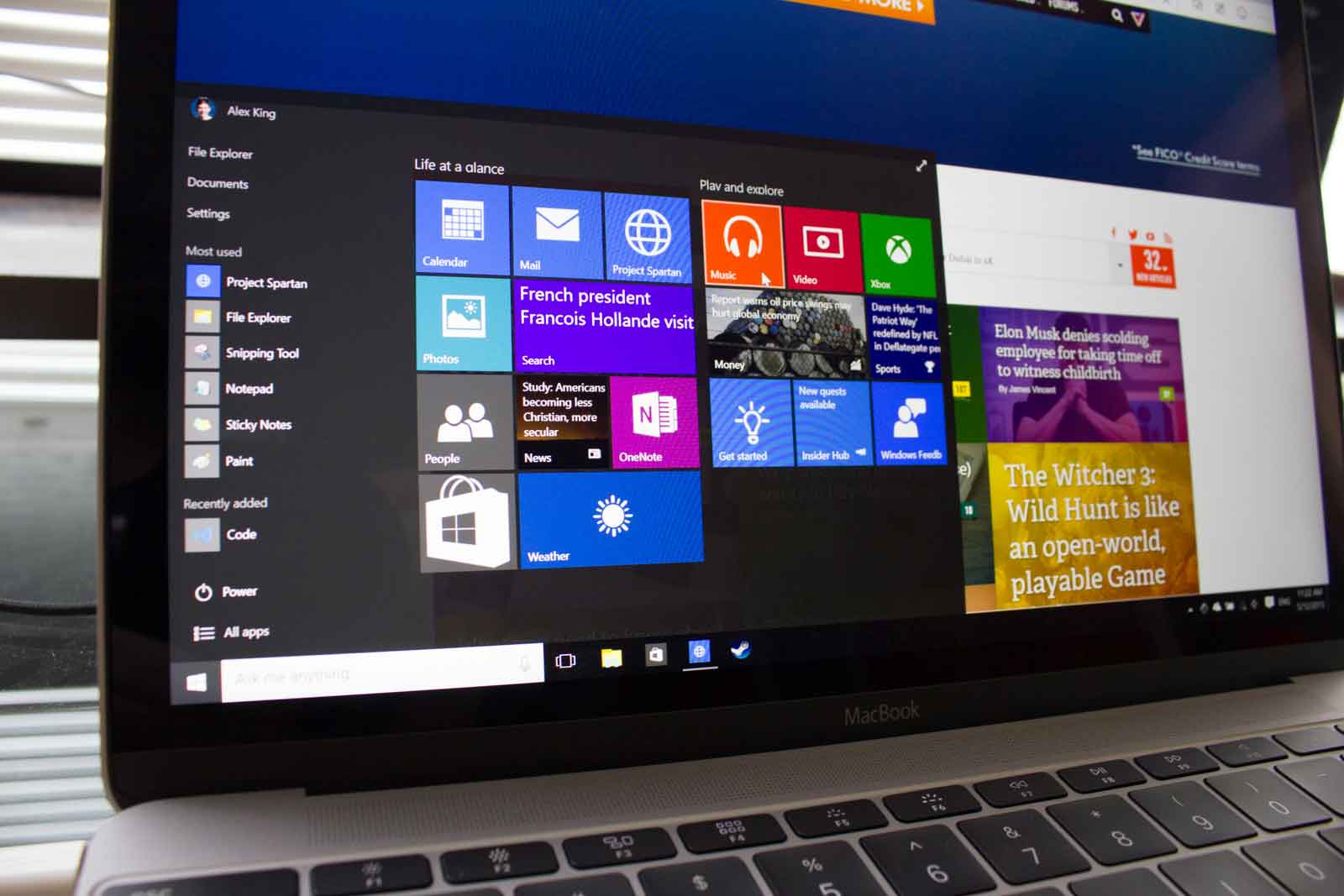Microsoft Windows 10 will not only run on older PCs, but on older Macs too
Microsoft Windows 10’s mission has always been, from the beginning, to be everywhere. Windows 10, depending on each individual iteration, is designed to run on smartphones, tablets, small and big laptops, as well as desktops and even “Internet of Things” connected devices, like household appliances and wearable tech.

Microsoft’s vision extends even further, by running on older devices too, breathing new life in a number of old laptops and desktop systems circling the drain of obsolescence. The minimum requirements to run Windows 10 are in fact so low, that the operating system can be run on devices as old as those that originally shipped with Windows XP, as long as they have at least 1GB or RAM, 1.5GHz processor, and sufficient space on the hard drive, to install and run Windows 10.
Can Windows 10 be even more awesome? Thanks to Apple, now it can:
The latest update to Apple Boot Camp, the software that allows to install other operating systems, including Microsoft Windows, alongside Mac OS X, has been upgraded to include support for Microsoft Windows 10.
Mac users who already have Windows 7 or 8.1 installed on their Macs will be able to upgrade to Windows 10, using the identical upgrade path as PC users.
Installing Microsoft Windows 10 on a Mac comes with full USB 3.0, USB-C, Thunderbolt, SuperDrive and many other hardware features available on the supported Macs, as shown in the list below.
- MacBook Pro (Retina, 15-inch, Mid 2015)
- MacBook Pro (Retina, 13-inch, Early 2015)
- MacBook Pro (Retina, 15-inch, Mid 2014)
- MacBook Pro (Retina, 13-inch, Mid 2014)
- MacBook Pro (Retina, 15-inch, Late 2013)
- MacBook Pro (Retina, 13-inch, Late 2013)
- MacBook Pro (Retina, 15-inch, Early 2013)
- MacBook Pro (Retina, 13-inch, Early 2013)
- MacBook Pro (Retina, 13-inch, Late 2012)
- MacBook Pro (Retina, Mid 2012)
- MacBook Pro (13-inch, Mid 2012)
- MacBook Pro (15-inch, Mid 2012)
- MacBook Air (13-inch, Early 2015)
- MacBook Air (11-inch, Early 2015)
- MacBook Air (13-inch, Early 2014)
- MacBook Air (11-inch, Early 2014)
- MacBook Air (13-inch, Mid 2013)
- MacBook Air (11-inch, Mid 2013)
- MacBook Air (13-inch, Mid 2012)
- MacBook Air (11-inch, Mid 2012)
- MacBook (Retina, 12-inch, Early 2015)
- iMac (Retina 5k, 27-inch, Mid 2015)
- iMac (Retina 5K, 27-inch, Late 2014)
- iMac (21.5-inch, Mid 2014)
- iMac (27-inch, Late 2013)
- iMac (21.5-inch, Late 2013)
- iMac (27-inch, Late 2012)
- iMac (21.5-inch, Late 2012)
- Mac mini (Late 2014)
- Mac mini Server (Late 2012)
- Mac mini (Late 2012)
The list of supported devices is quite comprehensive, and includes Mac products as old as 2012.
Installation
It goes without saying that while the free upgrade to Windows 10 applies to all valid licenses of Windows 7 and 8.1 already present on the system, installing Windows 10 from scratch requires purchase or a new license. This information has been reiterated by Microsoft, well before the official release of the operating system.
By this token, Microsoft has made the process of acquiring licenses and installing Windows 10, easier than any previous iteration of Windows, by eliminating the need for a physical installation medium. All that’s needed is an empty 32GB USB flash drive, to turn into a bootable Windows 10 installation medium, using a free application made available by Microsoft. The medium will then be used with Boot Camp, to install Windows 10 on a Mac.